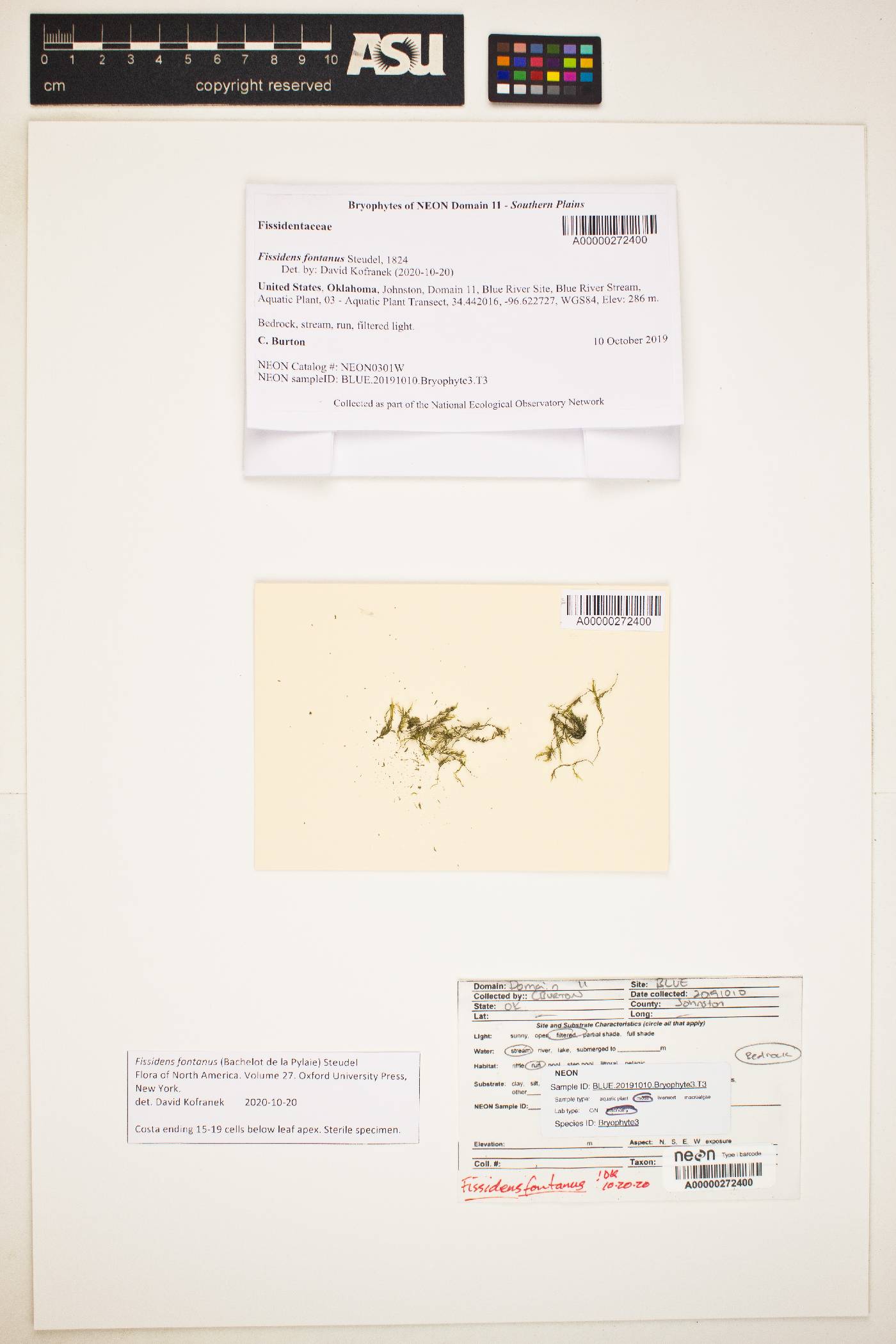
|
Fissidentaceae |
|
|
Plants tiny to robust. Stem, except for initial stages, growing from a 2-sided apical cell. Leaves distichous, equitant, complex in form, consisting of two vaginant laminae that clasp the stem, a ventral lamina located above the vaginant laminae, and a dorsal lamina that occupies the length of the leaf opposite the vaginant and ventral laminae; costa single, usually well developed, near center of leaf, sometimes reduced, absent or nearly so. Seta elongate. Capsule cylindric, peristome single, teeth 16, haplolepidous, endostomate, usually divided 1/2-2/3 their length, sometimes irregularly divided or undivided, sometimes reduced, (rarely absent). Calyptra cucullate. Fissidentaceae is recognized easily by its distichous and equitant leaves. This leaf form is closest to that of Bryoxiphium. The hepatic Diplophyllum is often confused with Fissidens. Relationship of the Fissidentaceae is with the Dicranaceae; both families have similar peristomes but differ principally in leaf structure.
|
|
This project was made possible in part by the Institute of Museum and Library Services [MG-70-19-0057-19].
Powered by Symbiota


